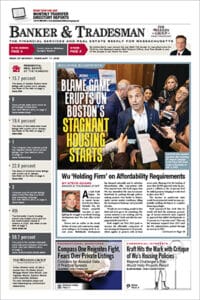
Even as the downtown retail economy continues to struggle, government workers aren’t being asked to lend a hand by returning to their desks. iStock illustration
Boston Mayor Michelle Wu has been a big cheerleader for the companies and businesses that drive the city’s economy to bring their workers back to the office full-time.
In a speech to the city business leaders back in September, Wu touted rising office occupancy numbers in Boston provided by a BXP executive that were significantly higher than the national average.
“Boston is leading the way on the return to the office,” Wu told members of the Greater Boston Chamber of Commerce, at her annual address to the group in September.
“As a global hub of innovation, being together in person fuels our creativity,” Wu noted.
Yet when it comes to the city government, the municipality’s largest employer with well over 19,000 employees, it seems as though what’s good for the goose is not necessarily good for the gander.
Even as it pushes companies to return to their downtown offices, Boston appears to be spending millions to help city employees work remotely.
Boston’s Tech Spending Up
The Wu administration is ramping up tech department spending by nearly 20 percent as it looks to “ensure the tools that keep remote work working are well supported,” according to the city budget.
It’s not clear how much of that increase is due to work on infrastructure related to remote work, as opposed to other projects. There are also plans as well for a “multi-year computer replacement plan for employees.”
Overall, Boston’s tech department’s budget is slated to increase to $53 million, up from $44.5 million previously, with roughly $3 million of the increase related to core infrastructure work.
But the additional spending and the efforts to further facilitate remote work on part of city employees have not gone over well with opponents of the mayor’s controversial tax rate plan.
Not only is downtown Boston hurting, but Wu has repeatedly insisted there is no room for any cuts in the city budget, despite an 8 percent increase in spending driven by generous post-pandemic union contracts and an expected rise in tax bills for city homeowners.
“If people aren’t coming to work … that’s costing city of Boston small businesses, local restaurants and other local establishments additional revenue,” Paul Jenney, a vice president at Charles River Development and a member of the Small Property Owners Association, said at a recent City Council hearing. “So, it’s just not helping. You need to work within the budget.”
Meanwhile, if the Wu administration is making a major effort to encourage city employees to return to the office, they are doing a poor job of advertising it.
I reached out to the city’s press office to discuss what the city is – or maybe more accurately isn’t – doing to get employees back in the office and received no response.
Still, employees in at least some departments, who are in good standing with their supervisors, have the option of working from home three days a week, according to sources close to city government. Compare that to the three or four days per week that many private firms seem to have settled on, with some Boston employers abandoning work-from-home entirely.
Flynn: City ‘Can’t Afford’ Remote Work
For his part, City Councilor Ed Flynn, whose district includes downtown, has been pushing the mayor and her team for two years to start bringing city employees back to the office.
As an incentive, he’s even proposed a four-day work week for city workers who return to the office but has been unable to get the Wu administration to play ball.
“We can no longer afford all sectors of our economy to work from home indefinitely and continue to contribute towards falling commercial property values,” Flynn said in a statement.
That said, it’s not just city government that is playing a double game here of touting the value of in-person collaboration while pursuing a somewhat different policy for its own workforce.

Scott Van Voorhis
A spokesperson for Gov. Maura Healey last year told the Globe that “we value having people working in-person as part of our efforts to build out a strong team environment and onboard new staff.”
The spokesperson also questioned plans initiated by the previous Baker administration to terminate state agency leases for office space in downtown Boston.
Yet those plans have continued to move forward, potentially pulling hundreds if not thousands of state employees out of Boston altogether.
Lease expirations by state agencies this past year and in 2025 could dump 800,000 square feet of empty office space, much of it concentrated in downtown Boston, Banker & Tradesman’s Steve Adams reported back in June. The state’s announced new leases totaling 106,000 square feet in two downtown buildings since then, plus a renewal for a nearly 300,000-square-foot slice of Intercontinental Real Estate Corp.’s 100 Cambridge St. tower.
Those leases are a good sign; a big downsizing by another major office occupier is the last thing downtown Boston needs right now. But that’s still only about half of the state office footprint that’s up for renewal.
Maybe Wu and Healey are true believers in the old-fashioned office and the collaborative magic it supposedly fosters.
But if that’s the case, they need to lead by example with their own workforce before preaching to anyone else.
Scott Van Voorhis is Banker & Tradesman’s columnist and publisher of the Contrarian Boston newsletter; opinions expressed are his own. He may be reached at sbvanvoorhis@hotmail.com.





